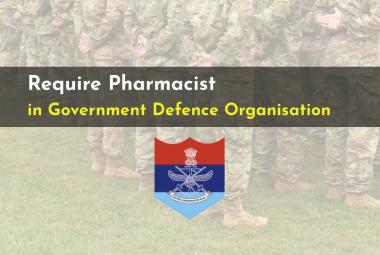About Authors:
Paresh Mohan*, Saurabh Patel, Shobhit Sharma, Mahaveer Prasad Kabra
Department of Pharmaceutics, Kota College of Pharmacy,
S-P-1, RIICO Industrial Area, Ranpur, Jhalawar road,
Kota, Rajasthan, India – 324009.
*pareshmhshwr90@gmail.com
Abstract:
Medical tourism is becoming a new thrust area for tourists across the globe. It is predominantly combined with travel and tourism. The term medical tourism has been coined by travel agencies and the mass media to describe the rapidly growing practice of travelling across all around the world to obtain hi-tech medical care. Various countries like Thailand, Malaysia, India, etc are promoting medical tourism eagerly. The key advantages of India in medical tourism are the following: low cost advantage, strong reputation in the advanced healthcare segment (cardiovascular surgery, organ transplants, eye surgery etc.) and the diversity of tourist destinations available in the country which attracts like culture, food etc.
The most of the people of many countries have long traveled to the developed countries like United States and Europe to seek the expertise and advanced technology available in leading medical centers. This paper focuses on the key issues and opportunities possessed by Indian medical tourism sector that enable it to overcome domestic and international barriers on upgrading its medical services. Finally, this paper analyses and concludes the main reasons why the developing country like India attracts foreign tourists for the medical treatment.
REFERENCE ID: PHARMATUTOR-ART-1693
INTRODUCTION:-
In the recent past, a trend known as medical tourism has emerged wherein citizens of highly developed countries choose to bypass care offered in their own communities and travel to less developed areas of the world to receive a wide variety of medical services. Medical tourism is becoming increasingly popular, and it is projected that as many as 750,000 Americans will seek offshore medical care in 2007. [1, 2]
It is important to begin by defining what is meant by ?medical tourism‘. For the purposes of this report we define medical tourism as when consumers elect to travel across international borders with the intention of receiving some form of medical treatment. This treatment may span the full range of medical services, but most commonly includes dental care, cosmetic surgery, elective surgery, and fertility treatment. Setting the boundary of what is health and counts as medical tourism for the purposes of trade accounts is not straightforward. Within this range of treatments, not all would be included within health trade. Cosmetic surgery for aesthetic rather than reconstructive reasons, for example, would be considered outside the health boundary (OECD, 2010,pp.30-31). [3]
Global competition is emerging in the health care industry. Wealthy patients from developing countries have long traveled to developed countries for high quality medical care. Now, growing numbers of patients from developed countries are traveling for medical reasons to regions once characterized as “third world.” Many of these “medical tourists” are not wealthy, but are seeking high quality medical care at affordable prices. [4]
The Government of India, State tourism boards, travel agents, tour operators, hotel companies and private sector hospitals are exploring the medical tourism industry for tremendous opportunities. They are seeking to capitalize on the opportunities by combining the country’s popular leisure tourism with medical tourism. The factors that make India as one of the favorable destination for health tourism starts with low medical cost which is one-tenth of the costs in western countries, for example, a heart surgery costs USD 6,000 in India as against USD30,000 in the US, Similarly a bone marrow transplant costs USD26,000 in India as compared to USD2, 50,000 in the US. Foreign patients throng Indian hospitals to pass up the long waiting lists and queues in their native countries. Globalization has promoted a consumerist culture, thereby promoting goods and services that can feed the aspirations arising from this culture. This has had its effect in the health sector too. There are number of reasons for the growth of the service economy and these can be categorized into three main areas such as:
* Social trend
* Demographic trends
* New services to meet new demands
The new services to meet new demand may include the “medical tourism”. Merging healthcare and tourism an industry has been evolved in many developing countries like Greece, South Africa, Jordan, India, Malaysia, Philippines and Singapore. Medical tourism where foreigners travel abroad in search of low cost, world-class medical treatment is gaining popularity in India. India’s medical tourism industry could yield as much as USD 3 billion in annual revenue by 2012. [5]
The country has excellent tourist products and now there are efforts to make them world class facilities. Focus is on development of state-of-art infrastructure, accompanied by world class services. Of late there has been a very positive change in the attitude of service providers and they have become customer friendly. For the country to offer world class tourist products technology and innovations are key drivers. The major challenges are lack of proper transport and accommodation in and around several lesser known places but popular destinations. These
are destinations which have the potential of drawing a large number of domestic as well as foreign tourists. Tour operators and destination management companies are developing strong partnership with counterparts abroad for increasing inbound tourism to India. Government is also taking steps to position India as „value for money? destinations among domestic tourists. With the cultural shift taking place in the Indian tourism landscape, families are opting for shorter but more frequent holidays both within and outside the country. This shift is taking place worldwide and people are opting for shorter and more frequent holidays. [6]
NEED FOR MEDICAL TOURISM:-
Medical tourism can be broadly defined as provision of 'cost effective' private medical care in collaboration with the tourism industry for patients needing surgical and other forms of specialized treatment. This process is being facilitated by the corporate sector involved in medical care as well as the tourism industry - both private and public.
The idea of the health holiday is to offer you an opportunity to get away from your daily routine and come into a different relaxing surrounding. Here you can enjoy being close to the beach and the mountains. At the same time you are able to receive an orientation that will help you improve your life in terms of your health and general well being. It is like rejuvenation and clean up process on all levels - physical, mental and emotional.
Many people from the developed world come to India for the rejuvenation promised by yoga and Ayurvedic massage, but few consider it a destination for hip replacement or brain surgery. However, a nice blend of top-class medical expertise at attractive prices is helping a growing number of Indian corporate hospitals lure foreign patients, including from developed nations such as the UK and the US. As more and more patients from Europe, the US and other affluent nations with high medicare costs look for effective options, India is pitted against Thailand, Singapore and some other Asian countries, which have good hospitals, salubrious climate and tourist destinations. While Thailand and Singapore with their advanced medical facilities and built-in medical tourism options have been drawing foreign patients of the order of a couple of lakhs per annum, the rapidly expanding Indian corporate hospital sector has been able to get a few thousands for treatment.
The Apollo Group, Escorts Hospitals in New Delhi and Jaslok Hospitals in Mumbai are to name a few which are established names even abroad. A list of corporate hospitals such as Global Hospitals, CARE and Dr L.V. Prasad Eye Hospitals in Hyderabad, The Hindujas and NM Excellence in Mumbai, also have built capabilities and are handling a steadily increasing flow of foreign patients. India has much more expertise than say Thailand or Malaysia. The infrastructure in some of India's hospitals is also very good. What is more significant is that the costs are much less, almost one-third of those in other Asian countries. [7]
NOW YOU CAN ALSO PUBLISH YOUR ARTICLE ONLINE.
SUBMIT YOUR ARTICLE/PROJECT AT articles@pharmatutor.org
Subscribe to Pharmatutor Alerts by Email
FIND OUT MORE ARTICLES AT OUR DATABASE
WHY MEDICAL TOURISM IN INDIA:-
India has a very old civilization of more than 5000 years and is known for her cultural and religious diversities with diverse geographical landmarks. The traditional arts and crafts add to her appeal to attract tourists. In India, according to the famous words “Atithi Devo Bhava” refers tourists are treated as God. In India, in addition to existence of modern medicine, indigenous or traditional medical practitioners continue to practice throughout the country. Popular indigenous healthcare traditions include Ayurveda, Siddha, Unani, Naturopathy, and Yoga. Ayurveda provides a complete system of preventive medicine and healthcare, which has been proven as its effectiveness over a long period in India. The science of Ayurveda is based on the knowledge of the human constitution. If every individual knows his or her own constitution, they can understand what constitutes a good diet and lifestyle for themselves. The five great elements, viz., ether, air, fire, water and earth are manifested into the three Dashas or biological organizations known as Vata, Pitta and Kapha. These biological organizations are used by an individual to gain a full understanding of all aspects of bodily functions, in order to establish the harmonious balance required for a healthy existence. Ayurveda is based on natural herbs, which gives distinct advantage.
The Siddha system defines disease as the condition in which the normal equilibrium of the five elements in human beings is lost resulting in different forms of discomfort. The diagnostic methods in Siddha medical system are based more on the clinical acumen of the physician after observation of the patient, pulse and diagnosis and clinical history.
Unani system of medicine believes that the body is made up of four basic elements viz., earth, air, water and fire, which have different temperaments i.e. cold, hot, wet and dry. After mixing and interaction of four elements a new compound having new temperament comes into existence i.e. hot-wet, hot-dry, cold-wet and cold-dry. Unani system of medicine believes in promotion of health, prevention of diseases and cure.
Naturopathy has several references in the Vedas and other ancient texts, which indicate that these methods were widely practised in ancient India. Naturopathy believes that the human body possesses inherent self-constructing and self-healing powers. Naturopathy differs slightly with other systems of medicine, as it does not believe in the specific cause of disease and its specific treatment but takes into account the totality of factors responsible for diseases such as one’s unnatural habits in living, thinking, working, sleeping, or relaxation, and the environmental factors that disturb the normal functioning of the body.
Yoga is a science as well an art of healthy living physically, mentally, morally and spiritually. Yoga is believed to be founded by saints and sages of India several thousand years ago. Yoga has its origin in the Vedas, and its philosophy is an art and science of living in tune with the universe. Yoga, the art and science of maintaining physical and mental well-being, has its origin in India. It is an instrument to self evolvement and enlightenment, through physical and mental well-being. Various Yogic postures gently massage internal vital organs, keeping them in perfect condition. Cholesterol levels are kept in check and the blood pressure is normalized. This
internal harmony cleanses and detoxifies the body and boosts the immune system. All these traditional healthcare systems are attracting national and international patients, and generate tourism flows. [1]

Fig- India ranks 2nd in medical tourism. [8]
Booming Medical Tourism in India
In the recent years, government support, low cost, improved healthcare infrastructure, and rich cultural heritage, have taken the Indian medical tourism to new heights. India has emerged as one of the world’s most cost-efficient medical tourism destinations, and thus, attained a position among the global leaders. Based on our analysis and facts and figures provided in our latest research report, we anticipate that the Indian medical tourism market will register a CAGR of 27% during 2011-15.
Extensive research and analysis also revealed that quality-driven wellness centers, cord blood banking, and medical tourism facilitators are among the key trends driving the medical tourism market. It has been observed that wellness tourism, alternate meditation, and the advantage of being the least competitive pricing have been the USP of the Indian medical tourism. Cardiac and orthopedic procedures constitute the majority share of the market. In order to obtain an in-depth knowledge, we also carried out primary research for cost comparisons of different medical procedures. [9]
FLOW CHART FOR INDIAN MEDICAL TOURISM PROCESS :-

Fig-Indian Medical Tourism Process [1]
SWOT ANALYSIS :-
Business, service firms undertake Swot analysis to understand their external and internal environments. SWOT, which is the acronym for strengths, weaknesses, opportunities and threats, is also known as WOTS-UP or TOWS analysis. Through such an analysis, the strengths and weaknesses existing within the medical tourism can be matched with the opportunities and threats operating in the Indian environment so that an effective strategy can be formulated. Some of the primary environmental influences operating currently in the context of the Medical Tourism in India.
Medical Tourism : SWOT approach.
Given below is a SWOT analysis of the Indian Medical Tourism.
Strengths :
A strength is an inherent capacity which an organization can use to gain strategic advantage. An example of a strength is superior research and development for a new service industry development so that the industry can gain a strategic advantage. The strengths in medical tourism are:
• Quality and Range of Services.
India has number of hospitals offering world class treatments in nearly every medical sectorsuch as cardiology and cardiothoracic surgery, joint replacement, orthopaedic surgery, gastroenterology, ophthalmology, transplants and urology to name a few. The various specialities covered are Neurology, Neurosurgery, Oncology, Ophthalmology, Rheumatology, Endocrinology, ENT, Paediatrics, Paediatric Surgery, Paediatric Neurology, Urology, Nephrology, Dermatology, Dentistry, Plastic Surgery, Gynaecology, Pulmonology, Psychiatry, General Medicine & General Surgery. For its quality of services and the infrastructure available, India is attracting a vast pool of tourists from the middle east, Africa etc.
• Affordable costs :
For a long promoted for its cultural and scenic beauty, India is now being put up on international map as a heaven for those seeking quality and affordable healthcare. With 50 million Amercians without health insurance and waiting lists for state- run facilities often endless in the UK, Canada and Europe, foreigners are increasingly flocking to India because it offers quality treatment at a fifth of the cost abroad. In India, complicated surgical procedures are being dine at 1/10th the cost as compare with the procedures in the developed countries. [10]
NOW YOU CAN ALSO PUBLISH YOUR ARTICLE ONLINE.
SUBMIT YOUR ARTICLE/PROJECT AT articles@pharmatutor.org
Subscribe to Pharmatutor Alerts by Email
FIND OUT MORE ARTICLES AT OUR DATABASE
THE COST OF MEDICAL:-
Procedures in Selected Countries (in U.S. Dollars)
|
S. No. |
Procedure |
U.S. Retail Price*
|
U.S. Insurers’ Cost*
|
India** |
Thailand** |
Singapore** |
|
1. 2.
3.
4. 5.
6. 7. 8.
|
Angioplasty Heart bypass Heart-valve replacement (single) Hip replacement Knee replacement
Spinal fusion Gastric bypass
|
USD98,618 USD210,842
USD274,395
USD75,399 USD69,991
USD82,646 USD108,127 USD40,832
|
USD44,268 USD94,277
USD122,969
USD31,485 USD30,358
USD47,735 USD43,576 USD16,833
|
USD11,000 USD10,000
USD9,500
USD9,000 USD8,500
USD11,000 USD5,500 USD7,500
|
USD13,000 USD12,000
USD10,500
USD12,000 USD10,000
USD15,000 USD7,000 USD9,000
|
USD13,000 USD20,000
USD13,000
USD12,000 USD13,000
USD15,000 USD9,000 USD12,400
|
Here:- * Retail price and insurers’ costs represent the mid-point between low and high ranges.
** U.S. rates include at least one day of hospitalization; international rates include airfare, hospital and hotel. [4]
Weakness :
A weakness is an inherent limitation or constraint which creates strategic disadvantages. An example of a weakness is overdependence on a single service line, which is potentially risky for a service industry in times of crisis. The weakness are as follows :
• No strong government support/ initiative to promote medical tourism.
• Low coordination between the various players in the industry- airline operators, hotels, and hospitals.
• Lack of uniform pricing policies across hospitals.
• Cheating
• Political problems etc.
Opportunities:
An opportunity is a favorable condition in the service industry which enables it to consolidate and strengthen its position. The following are opportunities in medical tourism.
• Increased demand for healthcare services from countries with aging population (US, UK)
• Fast-paced life style increases demand for wellness tourism and alternative cures.
• Shortage of supply in National Health Systems in countries like UK, Canada.
• Demand from countries with underdeveloped healthcare facilities.
• Demand for retirement homes for elderly people especially Japanese.
• Personal touch by the doctors in India.
• Traffic system is well developed and easy to go from one country to another country.
• Medicines and lab our cost is low as compared to developed countries.
Threats :
A threat is an unfavourable condition in the industry’s environment which creates a risk for, or causes damage to, the industry. They are :
• Strong competition from countries like Thailand, Malaysia and Singapore.
• Lack of international accreditaion – a major inhibitor.
• Overseas medical care not covered by insurance providers.
• Under – investment in health infrastructure.
• Exorcism is more in India, foreigners may attract.
• Identifying a real practitioner is a major problem in India.
• Exploitation of tourists by illegal money changers.
India - Strategic Thrusts for the Future
The following section lays down the strategy for India to achieve leadership position in medical tourism. The strategy largely draws from the discussions in previous section .
Role of Government :
The role of Indian Government for success in medical tourism is two-fold:
• Acting as a Regulator to institute a uniform grading and accreditation system for hospitals to build consumers’ trust.
• Acting as a Facilitator for encouraging private investment in medical infrastructure and policy making for improving medical tourism.
For facilitating investment the policy recommendations include:
• Recognize healthcare as an infrastructure sector, and extend the benefits Under sec 80-IA of the IT Act. Benefits include tax holidays for five years and concessional taxation for subsequent five years.
• The government should actively promote FDI in healthcare sector.
• Conducive fiscal policies - providing low interest rate loans, reducing import/excise duty for medical equipment.
• Facilitating clearances and certification like medical registration number, anti-pollution certificate etc.
The above measures will kick-start hospital financing, which is struggling now due to capital intensive and low efficiency nature of healthcare business. For facilitating tourism the government should:
• Reduce hassles in visa process and institute visa-on-arrival for patients.
• Follow an Open-Sky policy to increase inflow of flights into India.
• Create Medical Attachés to Indian embassies that promote health services to prospective Indian visitors. [10]
GROWTH, OPPORTUNITIES AND PROCESS OF MEDICAL TOURISM IN INDIA:-
The commitment to provide comprehensive healthcare to all citizens, irrespective of their paying capacity, was given up by the Indian government after 30 years of Indian independence. After the globalization and liberalization of Indian economy on 1991, the government of India has opened up medical service to the voluntary and private sectors for foreign tourists and other citizens who can pay to get the high-tech medical services. The rapid growth of the private sector over the 1980s and the emergence of a corporate health sector in the 1990s was a part of the comprehensive policy that chooses to promote these segments. This was done through shifting subsidies in terms of cheap land, concessions from equipment and drug import, placing these institutions on government panels and making them a part of government insurance schemes in addition to providing trained personnel and expert physicians through state –supported medical education.
As a part of medical tourism, India is recognized as the cradle for test tube babies and is popularfor surrogacy services (Qaders and John, 2009). Over than these, India offers high-tech cardiac, paediatric, dental, cosmetic and orthopaedic surgical services as well as the traditional healing systems. The medical tourism definitely does not cater to emergency services. The services provided are largely knee joint replacement, hip replacement (mostly orthopaedic), bone marrow transplant, bypass surgery and cosmetic surgery etc. Hospitals also advertise for preventive health check ups for family members accompanying the patients in addition to alternative medicine services ( Peacock, 2009). [1]
ROLE OF PRIVATE SECTOR IN HEALTHCARE
Statistics suggest that the medical tourism industry in India is worth USD333 million (Rs1,450 Crore) while a study by CII-McKinsey estimates that the country could earn Rs5,000-10,000 crore by 2012. The study predicts that, "by 2012, if medical tourism were to reach 25 per cent of revenues of private up-market players, up to Rs 10,000 Crore will be added to the revenues of these players". According to the Government of India, India's USD17-billion-a-year health-care industry could grow 13 per cent in each of the next six years, boosted by medical tourism, which industry watchers say is growing at 30 per cent annually. Probably realizing the potential, major corporates such as the Tatas, Fortis, Max, Wockhardt, Piramal, and the Escorts group have made significant investments in setting up modern hospitals in major cities. Many have also designed special packages for patients, including airport pickups, visa assistance and board and lodging.
The health care sector in India has witnessed an enormous growth in infrastructure in the private and voluntary sector. The private sector, which was very modest in the early stages, has now become a flourishing industry equipped with the most modern state-of-the-art technology at its disposal. It is estimated that 75-80% of health care services and investments in India are now provided by the private sector. An added plus had been that India has one of the largest pharmaceutical industries in the world. It is self sufficient in drug production and exports drugs to more than 180 countries. India has top-notch centres for open-heart surgery, pediatric heart surgery, hip and knee replacement, cosmetic surgery, dentistry, bone marrow transplants and cancer therapy, and virtually all of India’s clinics are equipped with the latest electronic and medical diagnostic equipment. Unlike many of its competitors in medical tourism, India also has the technological sophistication and infrastructure to maintain its market niche, and Indian
pharmaceuticals meet the stringent requirements of the U.S. Food and Drug Administration. Additionally, India’s quality of care is up to American standards, and some Indian medical centres even provide services that are uncommon elsewhere. For example, hip surgery patients in India can opt for a hip-resurfacing procedure, in which damaged bone is scraped away and replaced with chrome alloy--an operation that costs less and causes less post-operative trauma than the traditional replacement procedure performed in the U.S. While a large number of the private hospitals in India are willing to provide medical treatment to patients irrespective of nationality, only a few are in the forefront of promoting the health-hospitality mix. Some of the corporate hospitals in India that lead the medical tourism revolution are:
• Escorts Heart Institute & Research Centre
• Apollo Hospitals
• Wockhardt Hospitals
• Aravind Eye Hospitals
• Fortis Healthcare
• Leelawati Hospital
• Dr. Vivek Saggar's Dental Care & Cure Centre
• NM Excellence
• Manipal Hospital
• PD Hinduja National Hospital & Medical Research Centre
• LV Prasad Eye Institute
• B.M.Birla Herat Research Centre
• Christian Medical College
• Tata Memorial Cancer Hospital
Apart from the private players, public sector hospitals like All India Institute of Medical Sciences (AIIMS) has been receiving patients from over 16 countries including European nations and there is a steady increase in the number of patients, mainly for complex surgical procedures. The AIIMS has also initiated a dedicated International Healthcare Service team, which will take care of the patient right from arrival till their departure coordinating all aspects of medical treatment. [11]
TYPES OF SERVICES PROVIDED IN MEDICAL TOURISM:
|
Serious Illnesses Health control check Orthopaedic Heart Magnetic Resonance Dialysis Rheumatism Psoriasis Pain Management Rehab Neurology
|
Cosmetic Surgery Plastic surgery Skin Treatment Health Coaching Health control Balance week (stress treatment) Private-coach week (work-out treatment) Back in form (overweight) Re-start program (serious lazy asses) Stress treatment Massage and Spa Balanced diet – theory & practice Skin Diseases |
|
Teeth Surgery / Treatment Bleaching with laser Teeth-coloured filling Ceramic Inlays Porcelain veneers Crowns and Bridges Implants Gums Treatment Dental Care (for adults and children) Dental Surgery |
Sight Treatment Lasik surgery Eye Diseases
|
Fig- Services Providede in medical tourism.[12]
NOW YOU CAN ALSO PUBLISH YOUR ARTICLE ONLINE.
SUBMIT YOUR ARTICLE/PROJECT AT articles@pharmatutor.org
Subscribe to Pharmatutor Alerts by Email
FIND OUT MORE ARTICLES AT OUR DATABASE
SURROGACY REPORT
India has become the top international surrogacy destination for couples and even single men and women from Australia, the US, the UK and other parts of Europe who have not been able to have children through natural means. The success of the procedure in India, is greatly attributed to the cutting edge technology adopted by the fertility clinics in India, highly qualified fertility specialists, social acceptance of surrogacy, and low cost of surrogacy, all leading to India’s high success rate in gestational surrogacy. Australians, Americans, and West Europeans also seek surrogate pregnancy in India because of less cumbersome surrogacy laws in the country.

Since, India’s success rates match or are sometimes better than U.S. surrogacy success rates, the country is a popular destination for surrogacy. But take care to choose a well-respected fertility clinic and a very qualified and experienced fertility specialist. [13]
Indian Healthcare - New Avenues for Growth
In India, delivering an affordable healthcare to billion-plus population presents enormous challenges and opportunities for the medical community. The past decade has seen the country’s healthcare sector, one of the largest in terms of revenue and employment, transforming from a static, ordinary industry to a progressively vibrant and important market. As per our latest findings, India is one of the world’s most lucrative healthcare markets, and is expanding rapidly.
According to “Indian Healthcare - New Avenues for Growth” several key trends are backing the growth of India’s healthcare sector. Of these, medical city is relatively a new concept that offers immense growth opportunities. Likewise, there is a huge potential for day care surgeries. Almost 60% of all surgeries can be done in a day care mode as the current infrastructure supports.
Covering total healthcare spending and the leading causes of death, our report highlights the facts that India has the maximum number of diabetic patients in the world after China, and communicable diseases like malaria and tuberculosis are the prime cause of mortality in the country. The study, provides an in-depth analysis of various segments of the sector, observed that hospital services is one of the fastest growing segments, and holds the maximum share of the industry. Interestingly, traditional medicine system is an important segment of India’s healthcare industry. Through our research that includes statistical information about popular indigenous healthcare traditions such as Ayurveda and Unani, we found how the segment has been gaining prominence. According to our report, India is the most competitive destination with advantages of lower cost and sophisticated treatments. Due to such promising factors, the medical tourism has great potential in the country. Also, our analysis revealed that favorable demographic virtues offer an attractive market for healthcare providers and investors in India. In the recent past, there has been an increase in foreign investment inflows and private equity deals in the industry’s various segments. The study also includes the business profile of key players in major segments and their recent activities to provide a prudent analysis of the industry’s competitive landscape.[14]
Conclusion:-
It is generally believed that a person who travels from one region (or a country) to another for the purpose of undergoing treatment is a healthcare tourist. However, this definition excludes people who travel to another region (or a country) to explore, enjoy and rejuvenate, either the body or the mind, as both even without availing medical treatment. Such flow of tourism is greater in absolute number and volume of business generated all over the world.
The health delivery systems in many Western countries are overburdened, and patients have to face long waiting periods just to see a specialist, and even longer ones for surgeries. In many developed countries, the public healthcare system is so overburdened that it can take years to get needed care. In Britain and parts of North America, for instance, the waiting period for a hip replacement can be a year or more, while in INDIA, a patient can be in the operating room the morning after getting off a plane.Hospitality is about serving the guests to provide them with “feel-good-effect”. “Athithi devo bhavha” (Guest is God) has been one of central tenets of Indian culture since times immemorial. In India, the guest is treated with utmost warmth and respect and is provided the best services.
Indian doctors are widely recognized as being some of the best the world over. Now with the latest medical technology available in India, many Indian doctors practicing in the West have actually come back to practice in hospitals like Apollo. Also, world-class medical infrastructure, and the latest medical technology are now available in India, and hospitals now offer treatments and surgical techniques similar to those carried out at the best hospitals in the West. For many medical tourists, though, the real attraction is price. The cost of surgery in India can be one-tenth of what it is in the United States or sometimes even less. Low Waiting Period, Outstanding Service, World Class Quality and Low Cost - plus you get a vacation. So if you choose to undertake a procedure at a hospital in India, you can take a tour before or after the surgery and soak up a little bit of the fascinating and enchanting Indian culture. That can be a healing experience all by itself. [15, 16]
REFERENCES:-
1. Dr. Dawn Suman k. and Pal S., “Medical Tourism In India: Issues, Opportunities And Designing Strategies For Growth And Development”, “International Journal of Multidisciplinary Research”, Vol.1, issue 3, july 201, 185-202.
Available on- http://zenithresearch.org.in/images/stories/pdf/2011/July/16%20SUMAN%20KUMAR%20DAWN.pdf
2. Michael D. Horowitz, Jeffrey A. Rosensweig, and Christopher A. Jones, “ Medical Tourism: Globalization of the Healthcare Marketplace”, published in MedGenMed. 2007; 9(4): 33. Available on- http://www.ncbi.nlm.nih.gov/pmc/articles/PMC2234298/
3. Neil Lunt, Richard Smith, Mark Exworthy, Stephen T. Green, Daniel Horsfall and Russell Mannion, “Medical Tourism: Treatments,Markets and Health System Implications: A scoping Review”, DELSA/HEA/WD/HWP(2011)3.Available on- http://www.birmingham.ac.uk/Documents/college-social-sciences/social-policy/HSMC/publications/2011/medical-tourism-scoping-review.pdf
4. Herrick M. Devon, “Medical Tourism: Global Competition in Health Care”, “ National Center for Policy Analysis”, published by NCPA Policy Report No. 304 November 2007 ISBN #1-56808-178-2, 1-35. Available on- http://w.medretreat.com/templates/UserFiles/Documents/Medical%20Tourism%20-%20NCPA%20Report.pdf
5. Swain Dindayal and Sahu Suprava, “Opportunities and Challenges of health tourism in india”, “Part XI – Health, Spiritual and Heritage Tourism”, Conference on Tourism in India – Challenges Ahead, 15-17 May 2008, IIMK, 475-484. Available on- http://dspace.iimk.ac.in/bitstream/2259/590/1/475-484.pdf
6. Dr. S. P. Rath, Dr. Biswajit Das, Dr. Shivshankar Mishra, and Prof. Priya Puthan, “New Avenue of Tourism & Revenue Generation in India –“Medical Tourism”, “ International Journal of business and management of tomorrow”, Vol. 2 No. 1, jan.2012, 1-14. Available On- http://www.ijbmt.com/issue/117.pdf
7. http://www.health-tourism-india.com/need-for-medical-tourism.html
8. http://www.radiantmedicaltourism.com/medical_tourism_articles.html.
9. Brochure on Research and markets Available on- http://www.researchandmarkets.com/reports/613804/booming_medical_tourism_in_india.pdf
10. Kalyan Chakravarthy K., C. H. Ravi Kumar and Deepthi K., “ Swot Analysis on:Medical Tourism”, “Part IX – Medical Tourism”, Conference on Tourism in India – Challenges Ahead, 15-17 May 2008, IIMK, 357-364. Available on- http://dspace.iimk.ac.in/bitstream/2259/577/1/357-364+Kalyan.pdf
11. Babu P. George, “ Medical tourism; An Analysis with special reference to india”, “ Journal of hospitality application and research (JOHAR), sample article, 1-15. Available on- http://www.publishingindia.com/Uploads/SampleArticles/JHAR-Sample-Article.pdf
12. Sara Caballero-Danell and Chipo Mugomba, “Medical Tourism and its Entrepreneurial Opportunities- A conceptual framework for entry into the industry” , “Tourism and Hospitality Management Master Thesis No. 2006:91”, Medical Tourism January 2007, 1-111. Available on- https://gupea.ub.gu.se/bitstream/2077/4671/1/2006_91.pdf
13. http://www.medicaltourismco.com/medical-tourism/india-gestational-surrogacy-success-rate/
14. http://www.researchandmarkets.com/reports/656460/indian_healthcare_new_avenues_for_growth
15. http://www.eximbankindia.com/ht/conclusion.pdf
16. http://www.medicaltourismmag.com/article/swamis-to-surgeries.html
NOW YOU CAN ALSO PUBLISH YOUR ARTICLE ONLINE.
SUBMIT YOUR ARTICLE/PROJECT AT articles@pharmatutor.org
Subscribe to Pharmatutor Alerts by Email
FIND OUT MORE ARTICLES AT OUR DATABASE









